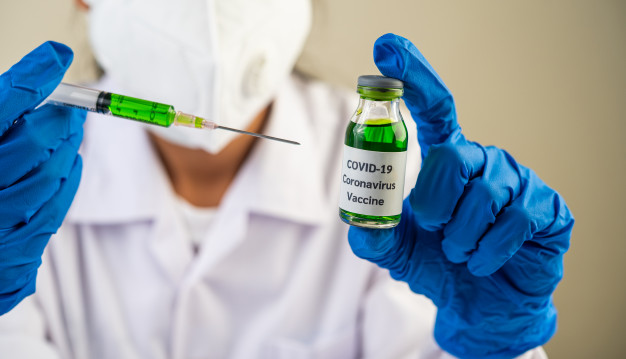
Scientists around the world are working feverishly on vaccines, what’s the status of vaccine research?
The U.S. Food and Drug Administration released a guidance document for the development of COVID-19 vaccines. It’s what we would have hoped for, it’s reasonable and reassuring. It should go a long way toward addressing concerns that urgency could influence the process.
On a global view, one vaccine has already been approved in China. And there are three vaccines in phase three clinical trials, eight in phase two trials, eleven in phase in one and 120 in pre-clinical, including here at Mayo Clinic. Those three that are in phase three clinical trials are the front runners.
Here’s the nuance. These are vaccines that are utilizing methods or vaccine platforms that have not been used before. So a lot of careful safety and efficacy studies have to be done. What we need to do, at some point, is engage in a national conversation about which vaccines are best for which patients. We will also have to know the characteristics of immunity produced by these vaccines. It won’t be simple. This will be a complicated vaccine decision that health care providers and patients will need to discuss, in the months ahead.
COVID-19 vaccines could be released to the public in two ways: through an Emergency Use Authorization (EUA) or through the full regulatory licensing process. The EUA process could result in a vaccine being released this Fall/Winter. Full licensing would likely mean release in the Winter/Spring timeframe.
There’s a flu virus just discovered in China, not related to COVID-19, that’s causing concern. What do you know about that?
The good thing is we know about this because of the kind of surveillance that’s currently being done. In the past, things like this happened and we often didn’t know about it until they reached the outbreak or even pandemic stage.
The concerning thing is that this is a virus that has avian genes in it, that came out of a pig, that resembles the 2009 pandemic virus. It has the markers of the type of influenza virus that with further changes could become a pandemic virus. Now, that’s speculation and it’s very early. It bears close scrutiny and further testing to understand if this virus is changing or mutating in anyway and if we’re seeing any spread.
But if there’s any vaccine that we would have to make a pandemic vaccine for, an H1N1 influenza virus (and that’s what this new virus is) is one of the easier ones. We know how to do that. We did it in 2009. The concern would be, if something like this were to emerge at the same time that we have an increase in COVID-19 cases, say this fall or winter. We’d be trying to make a lot of vaccine against two different respiratory viruses whose initial symptoms could overlap.
What about school concerns for children, since many classrooms may be opening soon?
The goal, like all things in life, is to make things safer.
Since there’s so much value, especially for younger children, to have in-person educational interaction, we have to look at a multitude of interventions that lower the risks and increase the safety for school children and the teaching staff. For example, if all we did was wash our hands or we only wore masks, those actions alone don’t protect us as much as doing them together.
You can get infected in any setting where you are not taking adequate precautions. Simply put, when you’re outdoors and around people you need to be in a mask or you run the risk of contracting this highly contagious coronavirus. Dr. Gregory Poland
School districts and states have released guidelines for how to safely open schools that involve considerations of mask wearing, distancing, foregoing some activities, health checks and others. All the plans I’ve been asked to review to date have been solid and well thought out.
It seems some people think you can’t get COVID-19 outdoors. Could you please address this?
While it’s true, being outside gives you the option for better social distancing and you might have wind currents diluting the viruses, etc., you can get infected in any setting where you are not taking adequate precautions.
When you’re outdoors and not around people, you essentially have no risk … but these outside bars and beaches, with people jammed shoulder to shoulder, are definitely putting people at risk. Simply put, when you’re outdoors and around people you need to be in a mask or you run the risk of contracting this highly contagious coronavirus.
How has Mayo Clinic met the challenges of the pandemic?
I am, personally, immensely proud of the institution I’ve devoted my adult life and career to. Mayo has done what we always do, even in the toughest circumstances of being in the midst of a pandemic, and that is to garner the best data and research, and use it to inform our medical practice.
We’ve taken difficult and appropriate steps to protect patients and health care providers. And the institution has done a massive job in sharing what we know with the public and with other health care providers.
Mayo continues to assist and facilitate critical research that needs to be done to advance the science and save lives. I am very, very proud of Mayo and my colleagues.
Six months into this pandemic, what message do you want to convey to the public?
The canvas that we call COVID-19 was absolutely blank 25 weeks ago. We’ve learned a tremendous amount and we scientists are vigorously engaged but we cannot always predict who will have severe disease. So remember your health is a precious gift. Preserve it all cost. Please follow all the precautions that are science based for you, your family, and your community. We care and we want our patients to be safe and healthy.
‘Courtesy: Mayo Clinic News Network.’[/vc_message]












